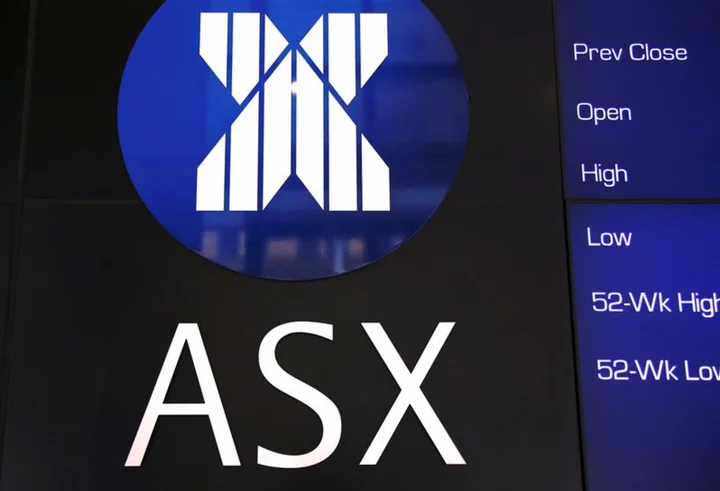
Australian bourse operator partners with TCS for trading software replacement
Australian bourse operator ASX Ltd said on Monday it would proceed with a product-based solution delivered by TATA
2023-11-20 06:25
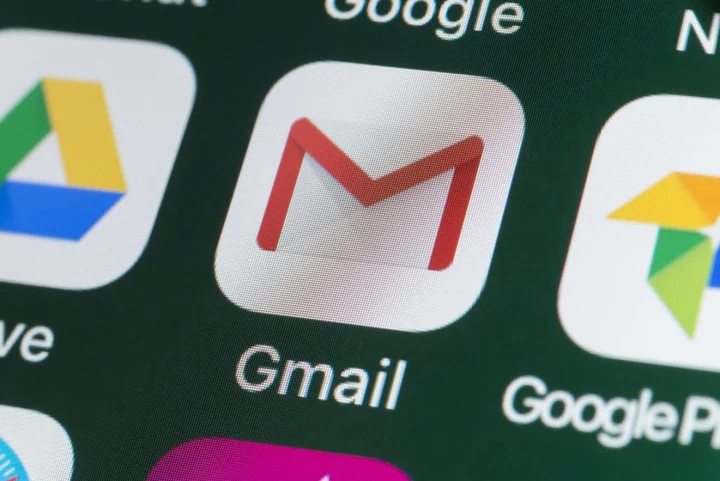
Gmail users receive urgent warning before account purge
Google’s decision to delete millions of inactive Gmail accounts could erase millions of photos and other irretrievable memories, users have warned. The purge, which comes into effect next month and will hit any account that has not been used for more than two years, could impact parents who have set up email addresses for young children in order to share and mark milestones with them. It could also inadvertently affect people who continue to manage the online accounts of deceased relatives. Googleannounced the policy in a blog post earlier this year, claiming that the move aims to protect active users from security threats like phishing scams and account hijacking. The mass closure will also free up significant amounts of server space, which will also save the US tech giant money and resources. Google warned that the new policy applied to personal Google accounts, which includes content within Google Photos and Google Workspace tools like Docs, Drive, Gmail, Meet and Calendar. Nicholas Worley, founder and chief executive of digital archiving platform Inalife, urged people to take action immediately in order to risk losing access to the accounts. “If you have a Google account set up for your kids and have been emailing them, or if you manage the account of a deceased loved one... Login, save or backup any important memories and stories,” he wrote on LinkedIn. Mr Worley told The Independent that he began recording memories when he learnt he was having his first child in 2019. “I have friends and now Inalife users who had set up emails for their kids and hadn’t known about the deletion issue before being told,” he said. The Independent has reached out to Google for further information about whether any impacted accounts will be retrievable once the purge has taken place, and the exact number of accounts potentially impacted. In its May blog post, Google’s vice president of product management Ruth Kricheli said that users would be able to keep their account active by reading or sending an email, using Google Drive, watching a YouTube video while logged in, downloading an app on the Google Play Store, or using Google Search. “[The] update helps us continue our advancements in account security, and helps reinforce our commitment to keep your private information private,” she wrote. “This update aligns our policy with industry standards around retention and account deletion and also limits the amount of time Google retains your unused personal information.” Google has already begun sending notifications to both the main email addresses and recovery emails of any accounts at risk of deletion. Read More Google is about to ditch passwords forever Don’t believe your eyes: how tech is changing photography forever Google issues three-week warning to Gmail account holders WhatsApp warning over fee to keep old messages
2023-11-20 02:49
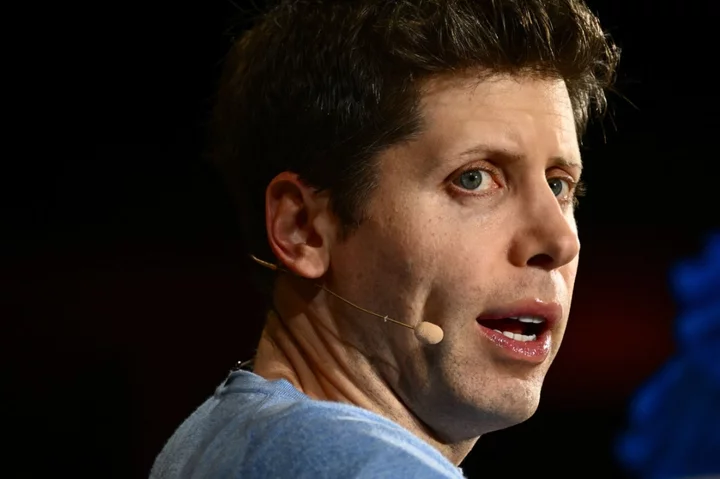
OpenAI in talks to bring Sam Altman back days after CEO ouster, reports say
Just days after Sam Altman was fired as OpenAI’s CEO, the board might be considering bringing him back, according to reports. Anonymous sources told both the Wall Street Journal and New York Times that the board is considering walking back on its dramatic firing of Mr Altman. Both outlets reported that Microsoft, a prominent investor in the company, was leading the charge to reinstate Mr Altman. The company announced the leadership change on Friday. “Mr. Altman’s departure follows a deliberative review process by the board, which concluded that he was not consistently candid in his communications with the board, hindering its ability to exercise its responsibilities,” the company wrote. “The board no longer has confidence in his ability to continue leading OpenAI.” While publicly citing communication issues, behind closed doors, the board and Mr Altman appeared to diverge when it came to OpenAI’s future. Mr Altman was hoping to push development more aggressively than the board, CNN reported. Greg Brockman, the president and cofounder of OpenAI who was asked to leave the board, wrote on X that the operation to upend the leadership happened quickly. Mr Altman was asked to join a video call with the board at noon on Friday and was immediately fired. Mr Brockman was not a part of the video meeting, he said. Twenty minutes later, Mr Brockman was told that he could stay in his role, but was being removed from the board, he wrote. “We too are still trying to figure out exactly what happened,” Mr Brockman wrote. He later announced he was quitting “based on today’s news.” Following his exit, Mr Altman wrote on X: “i loved my time at openai. it was transformative for me personally, and hopefully the world a little bit. most of all i loved working with such talented people. will have more to say about what’s next later.” The Times also reported that Mr Altman and Mr Brockman have plans to launch a new startup in the wake of his ouster and are speaking to investors. Those plans have not been made public. Read More OpenAI co-founder Sam Altman ousted as CEO ChatGPT Plus stops signups after major update ChatGPT creator mocks Elon Musk in brutal tweet
2023-11-20 01:29

How Apple put Snoopy into its new Watch faces
When the Apple Watch first launched back in 2015, there were 10 Watch faces. Now, there are more than 50. The newest among these is the Snoopy Watch face, designed in conjunction with the Charles Schulz Studio. The Independent sat down to talk to Gary Butcher, human interface designer at Apple, Eric Charles from Apple Watch product marketing and Paige Braddock, chief creative officer at Charles M Schulz Creative Associates to discover everything about the new Watch face. This is not the first time Snoopy has been on watches and he’s even appeared on high-end models like the Omega Speedmaster. As Eric Charles explains, “There’s a deep horological legacy of Snoopy appearing on watch faces from his early as the 1950s, and on Apple Watch, we’ve been able to bring Snoopy to life in whole new ways.” There 148 different animations for the Watch, which would run for 12 minutes if you played them one after the other; it’s tempting to try. They were all developed from an intense brainstorming session. Braddock, who was hired back in 1999 by Charles Schulz himself to work as an illustrator at the studio, reveals the creative dynamic: “Both Apple and peanuts have strong identities and a strong desire to connect in an authentic way with fans. “At the Schulz studio, we wanted to be authentic to Snoopy’s DNA and simultaneously explore the Apple Watch technology. Everyone knows that Peanuts is a comic strip that exists in a different decade: there are no smart phones or iPads in the comic strip. “But with mutual respect, it is possible to coexist as a modern tech company and a comic strip with a rich historic legacy. I always feel like a true collaboration is not one thing eclipsing the other, it’s finding a balance and working with contributors’ strengths.” As Braddock points out, there’s something about Snoopy for the Watch that’s a great fit. “If you look at a comic strip like this, it’s basically a four-panel storyboard. Even the aspect ratio from the comic to the watch face is almost the same. We sourced numerous animated sequences directly from Schulz’s original comic strips.” Snoopy’s look has evolved over the decades, from the fifties when he walked on all fours, to the sixties when he discovered he could do it on two legs. The shape of his canine head also changed. The collaborators had to decide whether the animation should be two-dimensional like the comic strip or 3D like the Snoopy Show. This led to a style that looks anything but electronic. Braddock again: “Ultimately, we chose to keep the watch animations as close as possible to the original Schulz drawings. Charles Schulz had a very specific and rare pin nib that he used. It was a nib that you had to dip in the ink bottle each time to fill it with ink and it meant he could create a varied line from thin to thick. “This sort of active drawing gives the character life. It’s obvious when you see these drawings that they’re handmade and not digital, and this is the feel that we wanted to preserve in the Watch animations.” But then Apple’s engineering kicks in. When you look at Snoopy on the Watch face, there’s a level of subtlety that you only notice after a while. Sometimes his activity is based on the weather, sometimes on what you’re doing. For instance, when you go swimming, so does Snoopy. Sometimes he even interacts with the Watch face itself, specifically with the minute hand. Gary Butcher expands on this: “One of the things we were especially excited to do is to have Snoopy and Woodstock interact with the minute hand of the watch. He can lean on it, He can throw things that bounce off of it. He can kick it when he wants to be fed. And he can jump up on it to wave to Woodstock on the other side.” This is one of the things that might mean you find yourself checking the time more than you actually need to. One time, he’ll peep out from behind the minute hand, his body magically hidden. Next, he’ll be skating and bounce off the minute hand because it’s in just the wrong place. Another time, a flying Woodstock will drop a bone for a recumbent Snoopy, which will bounce off the minute hand into his mouth. Then… look, you’re going to have to discover these things for yourself. On your birthday, Snoopy will celebrate. He’ll decorate his dog house for Christmas, or dress up for Halloween. In the creative process, they realised that with a little ingenuity, they could make these animations appear at different times. “To maximise the chances you’ll see those animations,” Butcher says, “we figured out we could simply rotate certain animations. I say simply rotate but under the hood is a really sophisticated scene layout engine being driven by an equally sophisticated decision engine.” Sometimes the rotation only needs to affect certain frames of the animation. If Snoopy is standing on the minute hand, he’s affected only when he’s up top, and his free fall into leaves below is unchanged and he falls naturally downwards, otherwise he’d shoot off sideways. “Each animation is only five seconds long, but by looping the whole animation or even just a few frames at the end, We’re able to keep certain scenes alive for much longer,” Butcher says. There’s more detail yet. Look closely and you’ll see the backgrounds are made up of dots – just the way it used to look in newsprint. Monday to Saturday has a half-tone dot background, but then bursts into colour for Sundays, again, just like it appeared in newspapers. This is called the Sunday Surprise. Eric Charles comments, “What I love about the way we’ve designed this watch face is that you may never see all of them. Because I live in California, I may not see the winter animations. I may never see the icy ones. I hopefully will never see the stormy ones either.” The team wanted to surprise and delight. Charles goes on to explain that they sought to find more and more content, all day long: “Those two words, surprise and delight, were basically the mantra of how we looked at this project. A certain animation can show up at 10.09 but when you raise your wrist again and it is still 10.09, what else can we serve you? What else can we present to you?” The mission to present Snoopy to the world was key to the endeavour, it seems. Paige Braddock says, “I don’t want the generation that uses modern devices to miss out on this really fantastic character. And I think Apple Watch is a bridge for some of those fans to discover – or rediscover – Snoopy.” Read More The Apple Watch has a major issue but Apple is working on a fix Don’t believe your eyes: how tech is changing photography forever Police to trial use of drones as first responders to emergencies Don’t believe your eyes: how tech is changing photography forever Police to trial use of drones as first responders to emergencies SpaceX launches world’s most powerful rocket – and then it disappears
2023-11-20 00:26

Dinosaurs still exist on other planets, say scientists
The dinosaurs may have been extinct for more than 65 million years but scientists have suggested that they could still exist as aliens on other planets. Researched published in the Monthly Notices of the Royal Astronomical Society suggests that dinosaurs might not only be on other planets but that we could also find them. The study suggests that if scientists researched compounds that are not currently on Earth but ones that were around during the age of the dinosaurs then it may yield some results. One key element that scientists believe could unlock what would be a groundbreaking discovery is oxygen. The levels of oxygen on Earth at the moment are around 21 per cent but during the time of dinosaurs it was higher at 30 per cent. This, in theory, allowed the dinosaurs to flourish and rule the planet for millions of years. The study suggests that if similar levels of oxygen can be discovered on faraway planets then the conditions could be right for alien like dinosaurs to exist. The study's co-author Lisa Kaltenegger said in a statement: "Modern Earth's light fingerprint has been our template for identifying potentially habitable planets, but there was a time when this fingerprint was even more pronounced — better at showing signs of life." She adds: "This gives us hope that it might be just a little bit easier to find signs of life — even large, complex life — elsewhere in the cosmos." One clue that could unlock this discovery which scientists are looking for are signs of a Phanerozoic stage on a planet which would allow creatures like dinosaurs to evolve. The study's lead author, Rebecca Payne of Cornell University, said: "The Phanerozoic is just the most recent 12 per cent or so of Earth's history, but it encompasses nearly all of the time in which life was more complex than microbes and sponges. These light fingerprints are what you'd search for elsewhere if you were looking for something more advanced than a single-celled organism." If they are successful in finding these conditions on other planets then Kaltenegger believes it could lead to the discovery of dinosaurs that have never been found on Earth. "Hopefully we'll find some planets that happen to have more oxygen than Earth right now because that will make the search for life just a little bit easier," she said. "And, who knows, maybe there are other dinosaurs waiting to be found." Sign up for our free Indy100 weekly newsletter Have your say in our news democracy. Click the upvote icon at the top of the page to help raise this article through the indy100 rankings.
2023-11-20 00:17
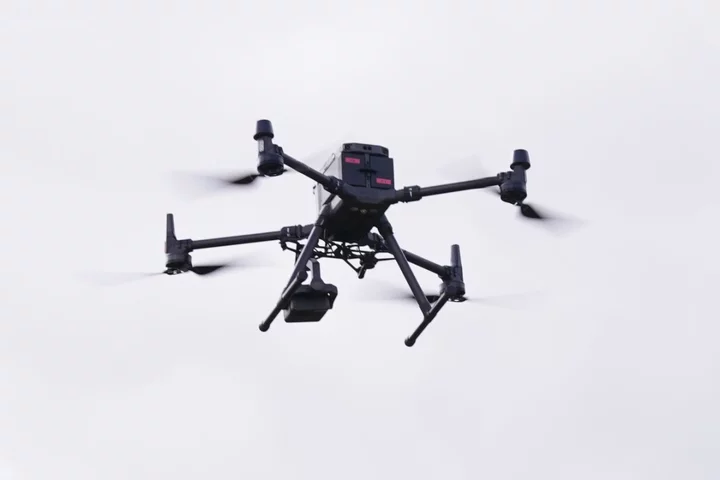
Police to trial use of drones as first responders to emergencies
Cutting-edge plans to use drones as first responders to police emergencies will be trialled in Norfolk next year. If testing is successful, the devices would be stationed on buildings and operated remotely to be sent first to scenes to give police early information. Initial trials, under a scheme dubbed Project Eagle X, will take place in Norfolk, which has limited access to the helicopters flown by the National Police Air Service because they are stationed so far away. Further tests will also take place in Thames Valley Police and Hampshire. It can tell you straight away whether you're talking about a major road traffic collision that requires three fire engines and four ambulances, or whether it's a minor prang and someone's getting overexcited Neil Sexton, National Police Chiefs' Council Police in England and Wales are working with officers in the US as similar trials have taken place in San Diego. The drones as first responders (DFR) devices are also set to be trialled in Belgium and the Netherlands. Neil Sexton, who advises the National Police Chiefs’ Council on the use of drones, said: “DFR is a drone that sits autonomously on a roof somewhere in a city and it’s in a box, it’s protected. “From a control station that receives a 999 call it can be launched completely remotely, flying overhead an incident to gain situational awareness that will be fed back not just to that control station or control room, but also to the first responders who are about to arrive on the ground.” The hope is the drone would give more accurate information on the potential scale of an incident that a potentially shocked member of the public who has called 999, and get there more quickly than a helicopter. “The ability to get a remote aircraft overhead an incident that is still developing to gain a better situational awareness [is] much improved over phone calls from members of the public who are under stress,” Mr Sexton said. “Sitting overhead, it can tell you straight away whether you’re talking about a major road traffic collision that requires three fire engines and four ambulances, or whether it’s a minor prang and someone’s getting overexcited.” Currently, police forces in England and Wales use about 400 drones that cannot be flown out of the operator’s line of sight. Plans are in place to amend those rules to allow police operators to do so, with initial trials taking place in areas with closed-off airspace next year. Forces are also planning much wider use of retrospective facial recognition technology, with chiefs proposing to double its use by May. The biometric software, hailed as significant a step forward for policing as DNA analysis, is used to compare images from sources such as CCTV with forces’ databases of custody shots. Britain’s largest police force the Metropolitan Police has already said it will use the software to catch prolific shoplifters caught on CCTV. South Wales Police, one of the forces to spearhead use of live and retrospective facial recognition, is also piloting software that can be used by officers on their mobile phones. Around 50 officers currently have access to an app on their phones that allows them to take a photo of a suspect and compare it to the force’s mugshot database. If the test is successful, the system could be rolled out across England and Wales. Read More Apple to adopt system to improve texting between iPhones and Android devices ICO seeks permission to appeal against Clearview AI tribunal ruling Users of iPhones can now check bank balance from Wallet app VR tool aims to help rail passengers spot and safely tackle sexual harassment Ring to preview security features with abuse charity to boost safety TikTok launches feature to save songs to music apps like Spotify
2023-11-19 08:28
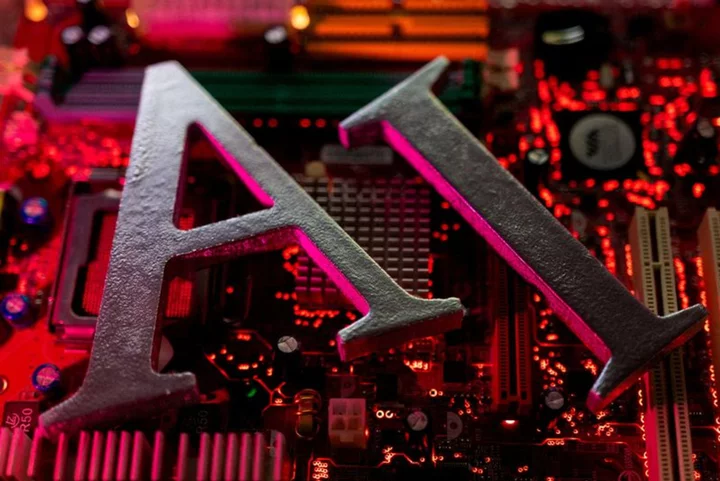
Exclusive-Germany, France and Italy reach agreement on future AI regulation
By Andreas Rinke BERLIN An agreement on how artificial intelligence should be regulated in the future has been
2023-11-19 04:22

Elon Musk mocked as Starship experiences 'rapid unscheduled disassembly'
Elon Musk's SpaceX company have once again attempted to launch the world's biggest rocket, Starship, but lost contact within eight minutes of takeoff. The launch from site near Boca Chica in Texas, east of Brownsville, did see the rocket reach space for the first time but despite its super heavy booster still experienced what is called "a rapid unscheduled disassembly" - or to put it bluntly - it blew up. SpaceX's livestream host John Insprucker said during the broadcast: "We have lost the data from the second stage... we think we may have lost the second stage." Despite losing the rocket and the obvious explosion the launch has still been hailed as a success by SpaceX and far more progress was made then the first test that they carried out in April, when another 'rapid unschedueled disassmbly' occured. Although it went well from SpaceX and Elon Musk's perspective people couldn't help but be amused by the use of the 'rapid unschedueld disassembly' terminology, with many mocking Musk himself. Meanwhile, Musk is facing his own problems on X/Twitter after it was discovered that the platform had helped promote pro-Nazi and anti-semitic material alongside big name advertisers on the site. This prompted IBM, one of the biggest brands on X/Twitter, to pull all the adverts from the site. In response Musk has threatened to drop a 'thermonuclear lawsuit' on US media watchdog, Media Matters, who had released the damaging data. Sign up to our new free Indy100 weekly newsletter Have your say in our news democracy. Click the upvote icon at the top of the page to help raise this article through the indy100 rankings.
2023-11-18 22:53
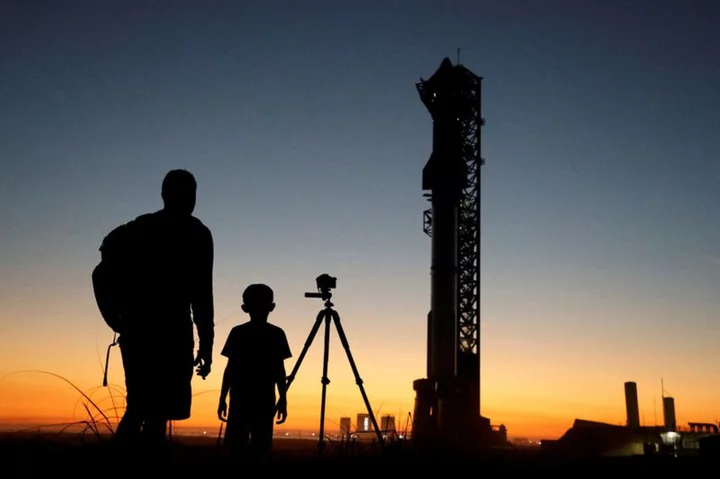
SpaceX Starship launched on test flight in Texas after last one blew up
By Joe Skipper, Joey Roulette and Steve Gorman BOCA CHICA, Texas (Reuters) -SpaceX's uncrewed spacecraft Starship, developed to carry astronauts
2023-11-18 21:53

SpaceX Starship: Elon Musk’s company launches most powerful rocket in the world for first ever time
SpaceX has successfully launched Starship, the world’s most powerful rocket, for the first ever time. The spacecraft took off from Texas early on Saturday local time. It marked SpaceX’s second attempt to launch the spacecraft, after a previous test in April saw the rocket exploded soon after launch. The booster that carried the spacecraft up towards orbit exploded after it detached from the main spacecraft. SpaceX said that it had known there was a chance that the booster would be destroyed in the launch. But the main part of the ship successfully carried on towards the edge of space. Eventually, SpaceX hopes that Starship will fly to the Moon and help with missions to Mars. But first it must undergo a series of uncrewed tests to ensure it is safe. Elon Musk - SpaceX‘s founder, chief executive and chief engineer - also sees Starship as eventually replacing the company’s workhorse Falcon 9 rocket as the centerpiece of its launch business that already lofts most of the world’s satellites and other commercial payloads into space. NASA, SpaceX‘s primary customer, has a considerable stake in the success of Starship, which the US space agency is counting on to play a central role in its human spaceflight program, Artemis, successor to the Apollo missions of more than a half century ago that put astronauts on the moon for the first time. Starship’s towering first-stage booster, propelled by 33 Raptor engines, puts the rocket system’s full height at some 400 feet (122 meters) and produces thrust twice as powerful as the Saturn V rocket that sent the Apollo astronauts to the moon. SpaceX is aiming to at least exceed Starship-Super Heavy’s performance during its April 20 test flight, when the two-stage spacecraft blew itself to bits less than four minutes into a planned 90-minute flight. That flight went awry from the start. SpaceX has acknowledged that some of the Super Heavy’s 33 Raptor engines malfunctioned on ascent, and that the lower-stage booster rocket failed to separate as designed from the upper-stage Starship before the flight was terminated. The company’s engineering culture, considered more risk-tolerant than many of the aerospace industry’s more established players, is built on a flight-testing strategy that pushes spacecraft to the point of failure, then fine-tunes improvements through frequent repetition. A failure at any point in the test flight would be a major concern for NASA, which is counting on SpaceX‘s rapid rocket development ethos to swiftly get humans to the moon in the U.S. competition with China’s lunar ambitions. Judging the success or failure of the outcome may be less than clear-cut, depending on how far the spacecraft gets this time. NASA Administrator Bill Nelson, who has made the China rivalry a key need for speed, compared Starship’s test campaign with the success of SpaceX‘s past rocket development efforts. “How did they develop the Falcon 9? They went through many tests, sometimes it blew up,” Nelson told Reuters on Tuesday. “They’d find out what went wrong, they’d correct it then go back.” The combined spacecraft in April reached a peak altitude of roughly 25 miles (40 km), only about halfway to space at its target altitude of 90 miles (150 km), before bursting into flames. Musk has said that an internal fire during Starship’s ascent damaged its engines and computers, causing it to stray off course, and that an automatic-destruct command was activated some 40 seconds later than it should have to blow up the rocket. The launch pad itself was shattered by the force of the blastoff, which also sparked a 3.5-acre (1.4-hectare) brush fire. No one was injured. SpaceX has since reinforced the launch pad with a massive water-cooled steel plate, one of dozens of corrective actions that the U.S. Federal Aviation Administration required before granting a launch license on Wednesday for the second test flight. Additional reporting by agencies Read More SpaceX launches ‘zero fuel’ engine into space SpaceX is launching the world’s biggest rocket – follow live SpaceX to launch world’s biggest rocket again after first attempt ended in explosion The world’s most powerful rocket should launch imminently, Elon Musk says Why Apple is working hard to break into its own iPhones OpenAI co-founder Sam Altman ousted as CEO
2023-11-18 21:17
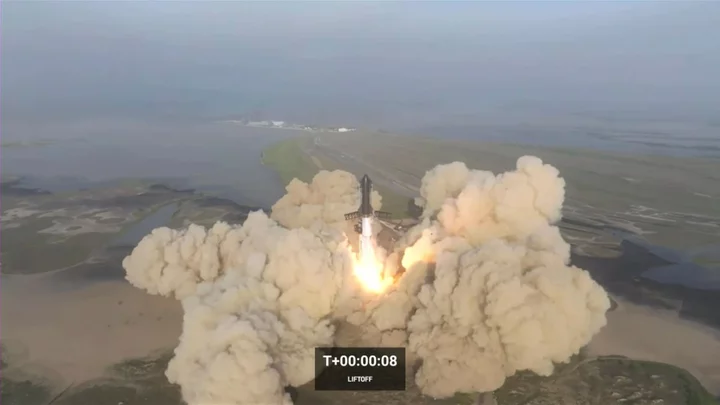
Starship launch LIVE: SpaceX attempts historic test of world’s biggest rocket
After months of delays, SpaceX will finally attempt to launch its massive Starship rocket into orbit for the first time. Saturday’s attempt comes seven months after the first effort to launch a fully stacked Starship – which is both the tallest and most powerful rocket ever built – ended in a catastrophic explosion, just minutes after lift off. SpaceX boss Elon Musk says Starship holds the key to making humanity a multi-planetary species, with plans to build hundreds of the spacecraft in order to set up a permanent human colony on Mars. But first Starship must successfully conduct an uncrewed orbital test, which will see it leave from its launchpad at SpaceX’s Starbase facility in Texas, before flying almost all the way around the Earth and splashing down off the coast of Hawaii. A 20 minute launch window opens at 7am CT (1pm GMT), with the flight expected to last around 90 minutes. We’ll be bringing all the latest updates, as well as a live stream as soon as it is available.
2023-11-18 18:54
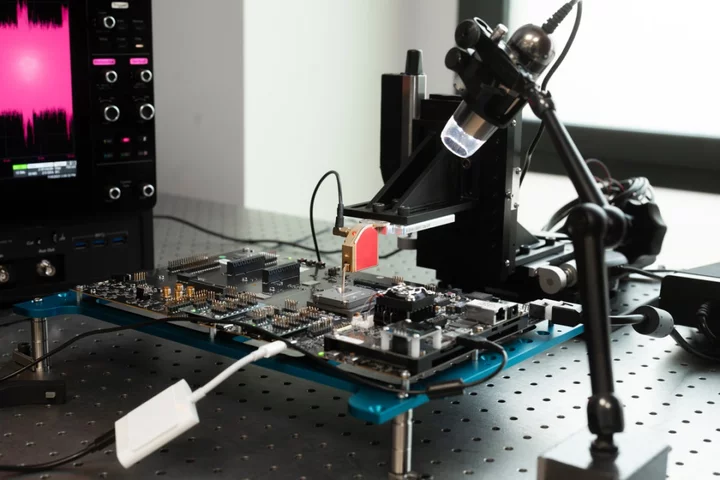
Why Apple is working hard to break into its own iPhones
Last summer, Apple’s iPhones got a new feature that it hopes you never need to use and which mostly makes them harder to use. Named Lockdown Mode, Apple stresses that it is not for everyone, calling it an “optional, extreme protection” aimed at “very few individuals” that will be irrelevant to most people. Many people will never know that the feature exists. But it is just one part of a range of features that Apple and other companies have been forced to add to their devices as phones and other personal devices become an increasingly important part of geopolitics. Lockdown Mode is just one part of Apple’s response: it sits alongside other security features as well as detailed security work that aims to stop people breaking into its devices. That work has largely been done quietly, with Apple focusing much more on its privacy work than on security. But recently it opened up on some of that work, as well as the thinking that led Apple to put so much focus onto a set of features that nobody ever wants to use. Some of that work is happening now in Paris. The city has a long history of work on security technology – including work on smart cards that saw the early widespread introduction of secure debit cards in France – but the activity at Apple’s facilities in the city is looking far ahead, towards iPhones and other devices that are secret for now and will not appear for years. As part of that work in Paris, Apple’s engineers are working hard to break its phones. Using a vast array of technology including lasers are finely tuned sensors, they are trying to find gaps in their security and patch them up before they even arrive in the world. Unlike with software, where even significant security holes can be fixed relatively simply with a security update, hardware is out of Apple’s hands once a customer buys it. That means that it must be tested years in advance with every possible weakness probed and fixed up before the chip even makes it anywhere near production. Apple’s chips have to be relied upon to encrypt secure data so that it cannot be read by anyone else, for instance; pictures need to be scrambled before they are sent up to be backed up on iCloud, for instance, to ensure that an attacker could not grab them as they are transferred. That requires using detailed and complicated mathematical work to make the pictures meaningless without the encryption key that will unlock them. There are various ways that process might be broken, however. The actual chip doing the encryption can show signs of what it is doing: while processors might seem like abstract electronics, they throw out all sorts of heats and signals that could be useful to an attacker. If you asked someone to keep a secret number in their head and let you try and guess it, for instance, you might tell them to multiply the number by two and see how long it takes and how hard they are thinking; if it’s a long time, it suggests the number might be especially big. the same principle is true of a chip, it’s just that the signs are a little different. And so Apple gets those chips and probes them, blasts them with precisely targeted lasers, heats them up and cools them down, and much more besides. The engineers in its Paris facilities doing this work are perhaps the most highly capable and well resourced hackers of Apple’s products in the world; they just happen to be doing it to stop everyone else doing the same. If they find something, that information will be distributed to colleagues who will then work to patch it up. Then the cycle starts all over again. It is complicated and expensive work. But they are up against highly compensated hackers: in recent years, there has grown up to be an advanced set of companies offering cyber weapons to the highest bidder, primarily for use against people working to better the world: human rights activists, journalists, diplomats. No piece of software better exemplifies the vast resources that are spent in this shadow industry than Pegasus, a highly targeted piece of spyware that is used to hack phones and surveil their users, though it has a host of competitors. Pegasus has been around since at least 2016, and since then Apple has been involved in a long and complicated game of trying to shut down to the holes it might exploit before attackers find and market another one. Just as with other technology companies, Apple works to secure devices against more traditional attacks, such as stolen passwords and false websites. But Pegasus is an entirely different kind of threat, targeted at specific people and so expensive that it would only be used in high-grade attacks. Fighting it means matching its complexity. It’s from that kind of threat that Lockdown Mode was born, though Apple does not explicitly name Pegasus in its materials. It works by switching off parts of the system, which means that users are explicitly warned when switching it on that they should only do so with good reason, since it severely restricts the way the phone works; FaceTime calls from strangers will be blocked, for instance, and so will most message attachments. But Lockdown Mode is not alone. Recent years have seen Apple increase the rewards in its bug bounty programme, through which it pays security researchers for finding bugs in its software, after it faced sustained criticism over its relatively small payouts. And work on hardware technologies such as encryption – and testing it in facilities such as those in Paris – mean that Apple is attempting to build a phone that is safe from attacks in both hardware and software. Apple says that work is succeeding, believing it is years ahead of its hackers and proud of the fact that it has held off attacks without forcing its users to work harder to secure their devices or compromising on features. But recent years have also seen it locked in an escalating battle: Lockdown Mode might have been a breakthrough of which it is proud, but it was only needed because of an unfortunate campaign to break into people’s phones. Ivan Krstić, Apple’s head of security engineering and architecture, says that is partly just a consequence of the increasing proliferation of technology. “I think what’s happening is that that there are more and more avenues of attack. And that’s partly a function of wider and wider deployment of technology. More and more technology is being used in more and more scenarios.,” says Krstić, pointing not only to personal devices such as phones but also to industry and critical infrastructure. “That is creating more opportunity for more attackers to come forward to develop some expertise to pick a niche that they want to spend their time attacking. “There was a time that that I still well remember when data breaches were seemingly not a wide problem. But of course, they have exploded over the last 10 years or so – more than tripled, between 2013 and 2021. In 2021, the number of personal records breached 1.1 billion personal records. “During the same amount of time a number of other attackers have been pursuing new kinds of attack, or different kinds of attacks – against devices, against Internet of Things devices, against really anything that is that is connected in in some way to the internet. “And I think in a lot of these cases, attackers were will go where there is money to be made or some other benefits to be obtained and the nature of the fight for security is to keep pushing the defences forward to keep trying to stay one step ahead of not just where the attacks are today, but also where they’re going.” Apple doesn’t reveal exactly how much of its money is spent on security work. But it must be significant, both in terms of raw money as well as the extra thought and design required on any given device. What’s the justification for investing so many resources on ensuring that a very small number of people are protected from the most advanced attacks? “There are two,” says Krstić. “One is that attacks that are the most sophisticated attacks today may over time start to percolate down and become more widely available. Being able to understand what the absolute most sophisticated most grave threats look like today lets us build defences before any of that has a chance to percolate down and become more widely available. But I think that’s the smaller of the two reasons. “When we look at how some of this state grade mercenary spyware is being abused, the kinds of people being hit with it – it’s journalists, diplomats, people fighting to make the world a better place. And we think it’s wrong for this kind of spyware to be abused in this way. We think that that those users deserve trustworthy, safe technology, and the ability to communicate safely and freely, just as all our other users. “So this was, for us, not a business decision. It was… doing what’s right.” Apple’s focus on security places it into a difficult geopolitical situation of the kind it has often studiously avoided. Late last month, for instance, Indian opposition leaders started receiving threat notifications warning them that their devices might be attacked. Neither the notifications or Apple more generally named who was doing it, and Apple says that the warnings could be a false alarm – but nonetheless the Indian government pushed back, launching a probe of the security of Apple’s devices. It is not the kind of difficulty that comes even with other security work; those stealing passwords or scamming people out of money don’t have lobbyists and government power. The kind of highly targeted, advanced attacks that Lockdown Mode and other features guard against however are costly and complicated, meaning they will often be done by governments that could cause difficulties for Apple and other technology companies. How is Apple guided in situations where it could potentially be up against governments and other powerful agencies? “We do not see ourselves as set against governments,” says Krstić. “That is not what any of this work is about. But we do see ourselves as having a duty to defend our users from threats, whether common or in some cases, truly grave. He declines to give precise details about how the company has dealt with those difficulties in the past. “But I think when you look at what’s been driving it, when you look at these cases that I’ve pointed to and when you look at what the response has been to the defences we built and how we’ve been able to protect some of these users, we feel very strongly like we’re doing the right thing.” Threat notifications are not the only part of Apple’s security work that have caused issues with authorities. Another much larger debate is coming, and might potentially bring a much more substantial change. The European Union’s recently signed Digital Markets Act requires that what it calls gatekeepers – Apple and other operators of app stores – must allow for sideloading, or letting people put apps on their phones from outside of those App Stores. At the moment, iPhones can only download and run apps downloaded from the official store; Apple says that is an important protection, but critics argue that it gives it too much power over the device. The introduction of sideloading is just one of the many controversial parts of the Digital Markets Act. But if it goes through as planned, the company will be forced to let people head to a website and download a third-party app, without standing in the way. The European Commission has made very clear that it believes that is required for fair competition, and that it thinks that will give users more choice about what apps they use and how they get them. Krstić does not agree, and Apple has been explicit in its opposition to sideloading. The idea that people are being given an extra choice – including the choice of sticking with the App Store and keeping its protections – is a false one, he says with some frustration. “That’s a great misunderstanding – and one we have tried to explain over and over. The reality of what the alternative distribution requirements enable is that software that users in Europe need to use – sometimes business software, other times personal software, social software, things that they want to use – may only be available outside of the store, alternatively distributed. “In that case, those users don’t have a choice to get that software from a distribution mechanism that they trust. And so, in fact, it is simply not the case that users will retain the choice they have today to get all of their software from the App Store.” Read More Disney, Apple suspend ads on Musk’s X after he agrees with antisemitic tweet Apple to adopt system to improve texting between iPhones and Android devices Users of iPhones can now check bank balance from Wallet app TikTok launches feature to save songs to music apps like Spotify Apple answers one of the big mysteries about the iPhone – for now You can finally use one feature of the Apple Vision Pro headset – sort of
2023-11-18 18:29
